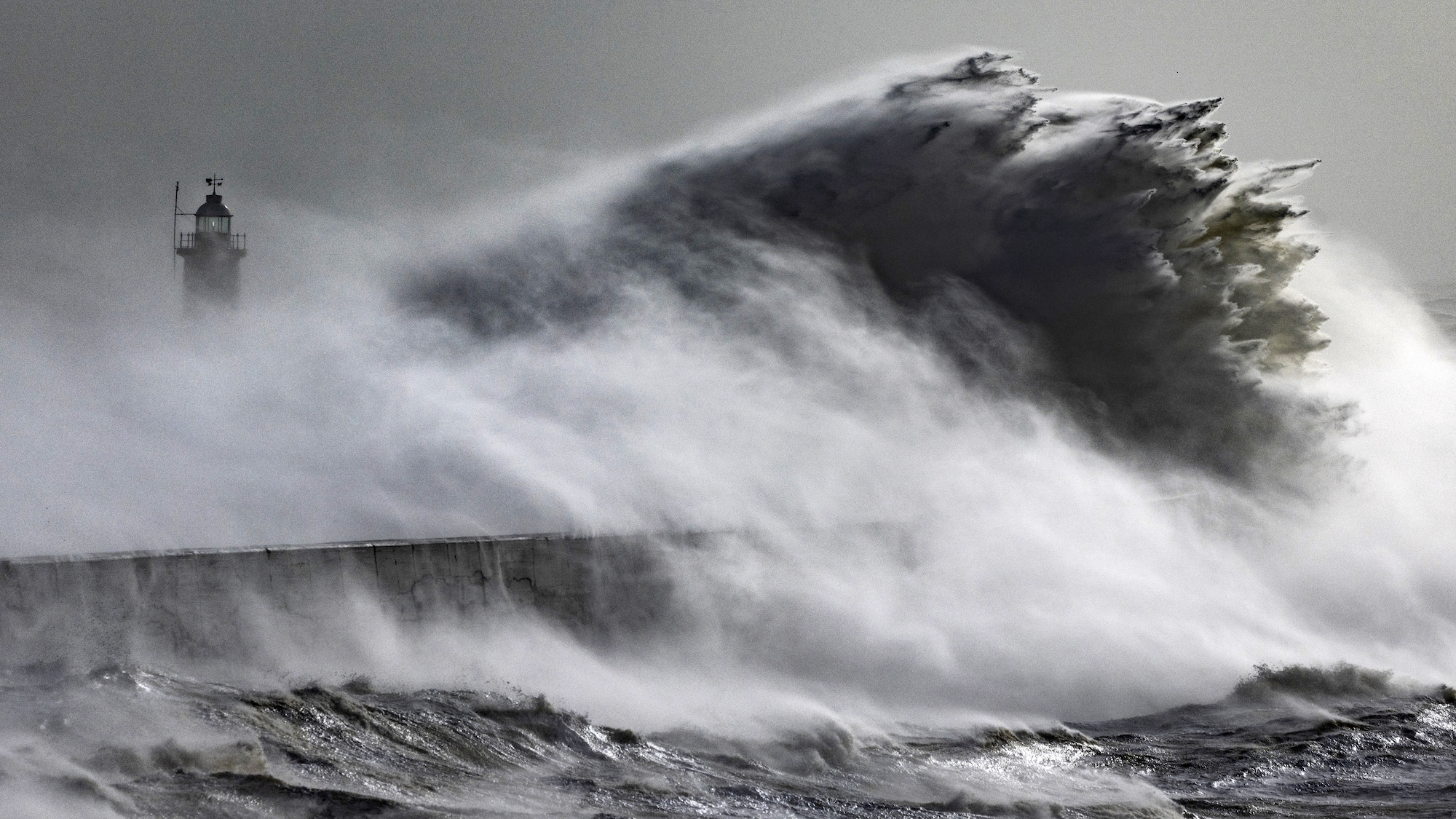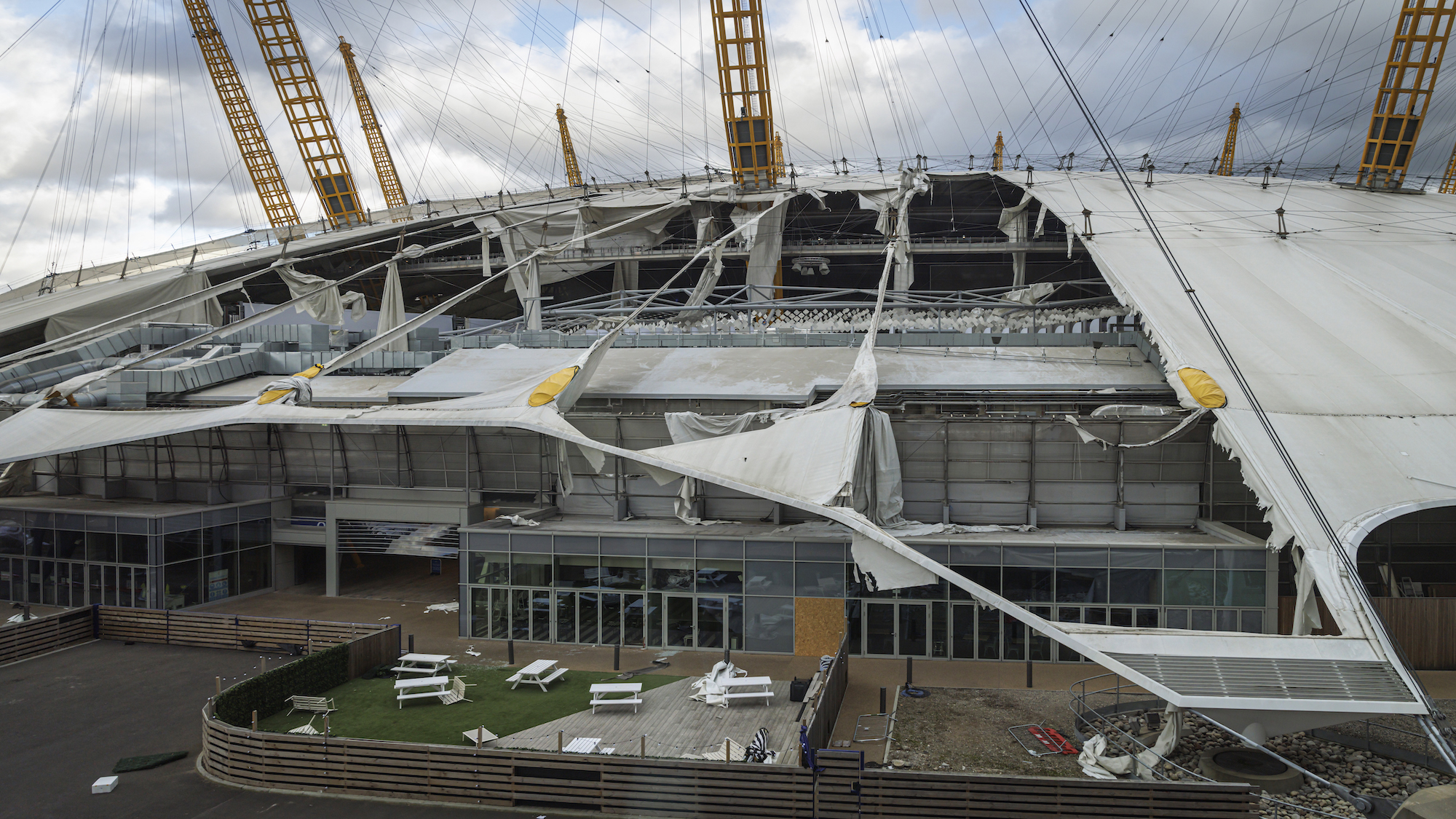Record-breaking winds blast Europe in the worst storm in decades
The storm has left 110,000 U.K. homes without power.

Record-breaking gusts of up to 122 mph (196 km/h) were recorded in England Friday (Feb. 18) as the United Kingdom, Ireland, Belgium and parts of the Netherlands and France face their worst storm in over three decades.
Trees have collapsed, trucks and cars have toppled on their sides, and thousands of homes have been left without power as the storm Eunice pummeled coastal regions around the Atlantic Archipelago and Europe's western coasts with wind, snow and heavy rain, according to the UK Met Office.
The record squall, the fastest wind speed ever recorded in England, was reported at the Needles Lighthouse on England's Isle of Wight, beating the previous record of 118 mph (190 km/h) at Gwennap Head, Cornwall, in 1979, according to the Met Office. The fastest wind speed ever recorded in the U.K. was on Cairngorm Summit, a mountain in Scotland that experienced a gust of 173 mph (278 km/h) in 1986.
Related: The 20 costliest, most destructive hurricanes to hit the US
"This is provisionally the highest gust ever recorded in England," the U.K .Met Office wrote on Twitter.
Millions have been urged to stay indoors, as one man, a 60-year-old council worker in Ireland, was killed by a falling tree, and a woman, in a separate incident in England, was seriously injured after being struck by flying roof tiles. Three people have also been killed on U.K. roads after their cars were struck by debris, according to the BBC. In mainland Europe, which was struck later on in the day, five people have reportedly been killed by the storm.
The raging storm has left roughly 110,000 U.K. homes without power and forced schools and businesses to close. The storm has also caused other widespread damage, with record-breaking winds shredding the fabric roof of London's O2 arena, blowing off part of a spire from a cathedral, and even toppling the central tower from a power station.
Get the world’s most fascinating discoveries delivered straight to your inbox.

Despite the storm's devastation, scientists have warned against rushing to link its severity to climate change. Peter Thorne, a professor of climate science at the University of Maynooth in Ireland, wrote on Twitter that, while climate change is making coastal storm surges and extreme rainfalls during storms like Eunice more likely, there is limited evidence for winds themselves being worsened. In addition, climate scientists have long explained that currently, they cannot link an event on its own to the changing climate.
"There are enough already serious and self-evident impacts of climate change happening without proverbially over-egging the pudding and linking each and every event to climate change," Thorne added.
Suzanne Gray, a storm researcher at the University of Reading, says that further damage, and potential loss of life, may result if the storm forms a "sting jet," a rare weather phenomenon that occurs when a narrow ribbon of air descends at speeds of more than 100 mph (160 km/h), creating a 6-to-12-mile-wide (10 to 20 kilometers) corridor of air. The last time a sting jet formed in the U.K. was during the Great Storm of 1987, which claimed 18 lives.
The record-breaking storm also brought unexpected popularity to a live YouTube channel that streams planes landing at London's Heathrow Airport. For several hours on Friday, Big Jet TV attracted more than 200,000 live viewers of its livestream of passenger jets attempting some rather hairy landings in the 70 mph (113 km/h) winds. Streamer and amateur aviation enthusiast Jerry Dyer, who runs the channel, urged the pilots on by shouting, "go on, son," "fair play mate" and "bosh!" as they made their landings.
Originally published on Live Science.

Ben Turner is a U.K. based writer and editor at Live Science. He covers physics and astronomy, tech and climate change. He graduated from University College London with a degree in particle physics before training as a journalist. When he's not writing, Ben enjoys reading literature, playing the guitar and embarrassing himself with chess.
 Live Science Plus
Live Science Plus





